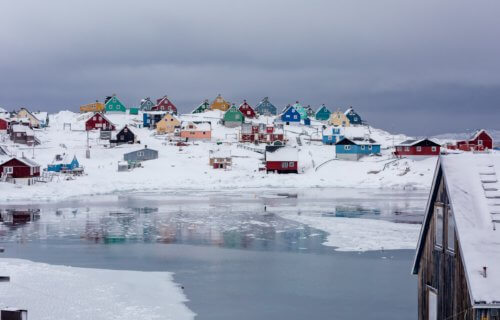POTSDAM, Germany — Depending on where you live, there’s a chance snow has become a rare sight in recent years. However, in places like Greenland many wouldn’t expect that to be a problem. Unfortunately, scientists say even this region in the Arctic Circle is seeing disturbing warning signs of climate change. A new study finds Greenland’s ice sheet is beginning to destabilize; an event that could one day trigger massive melting and significant sea level changes.
“We have found evidence that the central-western part of the Greenland ice sheet has been destabilizing and is now close to a critical transition,” explains lead author Niklas Boers from the Potsdam Institute for Climate Impact Research (PIK) and the Free University in Berlin in a media release. “Our results suggest there will be substantially enhanced melting in the future – which is quite worrying.”
Researchers are relying on Greenland’s melt-elevation feedback to determine how stable the ice sheet is. As rising temperatures cause more ice to melt, the ice sheet shrinks in height.
For a mountain, where it’s colder at the top than at the bottom, ice melting at the surface causes the mass to sink. As it sinks lower into the warmer air, even more ice begins to melt away leading to more accelerated height loss.
“This mechanism is long known, and it is one of the prime suspects for the detected destabilization of the central-western parts of the Greenland ice sheet. But we cannot exclude that other feedbacks, for example related to the albedo of the ice sheet, play an important role too,” Boers explains.
Could this be the start of a global catastrophe?
Boers and co-author Martin Rypdal from the Arctic University of Norway examined sea level temperatures from local weather stations and melting rates from ice core samples in central-west Greenland. Using computer simulations, the team discovered that the Arctic territory’s ice sheet is nearing an unsettling tipping point.
“The warning signs are caused by characteristic changes in the dynamics of the Greenland ice sheet, which reflect how well the ice sheet can resist against and recover from disruptions,” Rypdal says.
The results reveal the melting of the Greenland Ice Sheet will be inevitable when global temperatures reach an average between 1.44 and 5.76 degrees Fahrenheit above pre-industrial levels. Study authors warn, once the world reaches this mark, the entire ice sheet could start melting. This process will take hundreds or possibly thousands of years, but the result will cause sea levels to rise by over 23 feet. Researchers add such an event will also cause the collapse of the Atlantic Meridional Overturning Circulation, which keeps North American and Europe warm.
Despite the dire outlook, scientists note there are ways of stabilizing the ice sheet. Most of these involve increasing the accumulation of ice at levels above the surface.
“We urgently need to better understand the interplay of the different positive and negative feedback mechanisms that determine the current stability and the future evolution of the ice sheet,” Boers says.
Is all of Greenland in danger from climate change?
The study finds the central-western part of Greenland’s ice sheet is in the most peril currently. The team is still uncertain how its destabilization will impact the rest of the area at this time.
“Given the signs we detect in ice cores from the central-western part, we have to increase our efforts to gather more observation and to increase our understanding of the mechanisms at play, for more reliable estimates of the future evolution of the Greenland ice sheet,” Rypdal notes.
“The main problem is the so-called hysteresis,” Boers concludes. “Regardless of the precise interplay of the different feedbacks, we would have to considerably reduce temperatures below pre-industrial to get back to the ice sheet height levels of the last centuries. So practically, the current and near-future mass loss will be largely irreversible. That’s why it is high time we rapidly and substantially reduce greenhouse gas emissions from burning fossil fuels and re-stabilize the ice sheet and our climate.”
The study appears in the journal PNAS.
